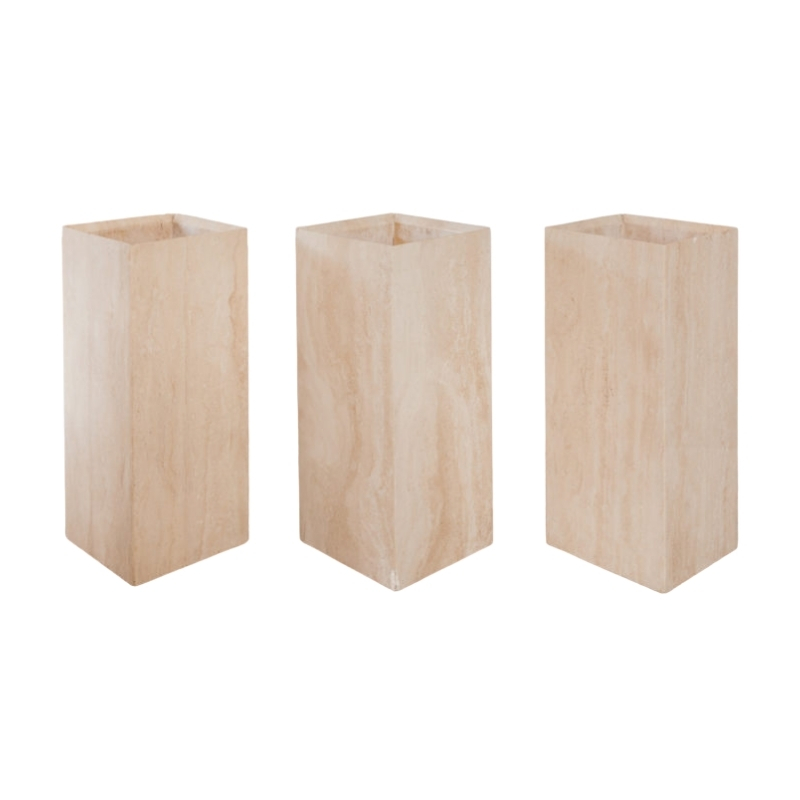As to
veneers and their relative appearance, the chair woodywood shows above will appeal to some and not to others, because some prefer a wilder sort of grain (plain-sliced ash, for instance) while others would rather have the tailored "architectural" (?) look of the quartered beech -- if that's what it is -- on this little Jacobsen 7. (Architects over time have typically specified this kind of carefully-matched and repetitive grain patterns, in quieter graining like rift and quarter-sliced veneers, for "background" interior work -- though of course the more active grain of the ash-veneered Eames chairs was chosen by an architect, too !)
Perhaps it isn't the plain-ness of the grain on the Jacobsen chair that seems "cheap" to woody; it might be the few and large leaves, or (more likely ?) the fact that the veneers are intentionally slip-matched rather than book-matched; this is what gives the consistent left-light/right-dark appearance to the leaves. This is a more bold and asymmetrical choice, not typically seen before the modern era -- comparable in mood and spirit to, say, the facade of a Breuer house or an example of mid-century European typography.
Note that the veneer array is carefully centered on the chair. This is taken for granted in veneer work -- and should be. A random placement would be -- and would seem -- truly cheap !
SDR
Yes, I am mainly referring to the fact that many manufacturers seem to using smaller sheets of veneer these days, with less interesting grain patterns, such that multiple sheets are required to cover something as small as a chair back.
Taking the Jacobsen chairs as an example, I have a few vintage pieces that are perfectly book-matched down the center, and the grains are wonderful. One of the teak pieces looks like it may even be a single sheet of veneer.
I also have a vintage LCM in ash where the grain on the seat is just crazy!
It is
unusual to see a production piece with leaves of veneer wider that 9 or 10 inches -- unless the veneer is rotary cut, not common for hardwood veneers. One of the qualities of book-matched (as opposed to slip-matched) veneers is that the seams can almost (or completely) disappear, because the grain on either side of the joint is literally identical. If the grain is straight enough and perfectly parallel to the seam, and the specie and cut are such that there isn't a difference in the way light reflects from the front and the back of the veneer (which is the only difference between the wood on either side of each joint) then the panel has the potential to look like one piece of wood.
Perception is often (usually ?) based on preconception. If one's take on wood, veneer or otherwise, is that anything made from it should always look like -- and be -- a single piece of material, then any piecing of material is going to strike one as a compromise. On the other hand, if the nature of wood is taken into account, then the fact that trees are typically harvested before they have grown to an unmanageable size, perhaps checking or rotting in the process, and that a certain amount of material near the outside of the log must be discarded because of light-colored sapwood, limiting the widths of the flitches of veneer that the log will yield, then one will not expect to find unbroken expanses of flawless veneer, and will not be disappointed by the bulk of what appears on the market, new or old.
I do not mean to pick on you or any other reader or to take a high-handed stance (though I guess it might sound that way) -- only to remind all of the nature of the beast, and that we are blessed by what degrees of perfection can be wrought when all is in good order.
If you need any help, please contact us at – info@designaddict.com









